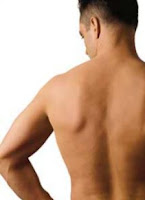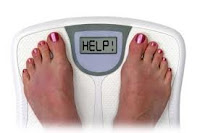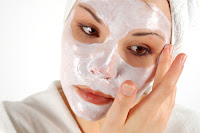The average person has over two and one half million sweat glands distributed all over the body in the layer of the skin called the dermis. There are two types of sweat glands, the Eccrine which is the most common especially on the palms, soles of the feet, and forehead and the Apocrine which are found in the armpits and genital areas. Eccrine sweat glands are smaller and are active from birth producing sweat that does not contain proteins or fatty acids while Apocrine sweat glands become active at puberty and are larger.
Our bodies are sweating all the time which goes unnoticed. This is our body's way of dispersing body heat that comes from our metabolism and working muscles. Sweat can occur in response to a stressful situation, heat, or exercise. During low sweat production the Eccrine sweat glands release smaller amounts of sweat that actually get reabsorbed before reaching the surface of the skin. During high sweat production such as intense exercise, there is not enough time for the sweat to be reabsorbed and much of it reaches the surface of the body.
The sweat in the Apocrine glands is made the same way as that of the Eccrine glands but the composition is different. It contains proteins and fatty acids which makes it thicker and sometimes yellowish. Contrary to popular belief sweat is not odorous, it is a metabolic process between bacteria and proteins and fatty acids.
The body has the ability to adjust sweat production dependent upon climate. If your body is not acclimated to a hot climate it will only produce one liter per hour but incredibly if you move to a hot climate your body will adapt and be capable of producing as much as three liters per hours within a few weeks!
One of the major factors influencing how much we sweat is the humidity in the air around us. Because humid air is already saturated with moisture sweating does not evaporate from your body and therefore doesn't cool your body as well. When sweat does evaporate it leaves salts behind which is why your skin tastes salty when sweating.
Losing too much sweat without replacing the fluids can result in mineral imbalances that can lead to circulatory and vascular problems, kidney failure, and heat stroke so it is crucial to remain properly hydrated when sweating profusely
Read more
Our bodies are sweating all the time which goes unnoticed. This is our body's way of dispersing body heat that comes from our metabolism and working muscles. Sweat can occur in response to a stressful situation, heat, or exercise. During low sweat production the Eccrine sweat glands release smaller amounts of sweat that actually get reabsorbed before reaching the surface of the skin. During high sweat production such as intense exercise, there is not enough time for the sweat to be reabsorbed and much of it reaches the surface of the body.
The sweat in the Apocrine glands is made the same way as that of the Eccrine glands but the composition is different. It contains proteins and fatty acids which makes it thicker and sometimes yellowish. Contrary to popular belief sweat is not odorous, it is a metabolic process between bacteria and proteins and fatty acids.
The body has the ability to adjust sweat production dependent upon climate. If your body is not acclimated to a hot climate it will only produce one liter per hour but incredibly if you move to a hot climate your body will adapt and be capable of producing as much as three liters per hours within a few weeks!
One of the major factors influencing how much we sweat is the humidity in the air around us. Because humid air is already saturated with moisture sweating does not evaporate from your body and therefore doesn't cool your body as well. When sweat does evaporate it leaves salts behind which is why your skin tastes salty when sweating.
Losing too much sweat without replacing the fluids can result in mineral imbalances that can lead to circulatory and vascular problems, kidney failure, and heat stroke so it is crucial to remain properly hydrated when sweating profusely

















